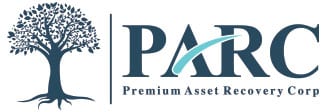Medical Factoring: A Financial Lifeline for Small Healthcare Providers

How Medical Debt Buyers Determine the Value of Debt Portfolios: A Deep Dive
December 26, 2023Introduction
Small healthcare providers often find themselves in a tight spot financially. Picture a local clinic or a small-town doctor’s office waiting endlessly for insurance reimbursements. These delays can create a serious cash crunch, making it tough to pay bills or invest in necessary resources, and it’s more than just a monetary issue – it impacts their ability to provide the best patient care.
Enter medical factoring, a practical financial solution tailor-made for these scenarios. It acts as a bridge, helping small healthcare practices manage their cash flow more effectively and stay afloat. This isn’t just about getting by; it’s about providing these smaller entities with the tools to thrive and grow.
In this blog, we’ll explore the role of medical factoring in leveling the playing field for small healthcare providers. We’ll look at real-life case studies showing its impact and discuss the importance of having such flexible financial options available. It’s a closer look at how medical factoring can be a game-changer, enabling small providers to focus on what they do best – caring for their patients.
How Medical Factoring Can Level the Playing Field for Smaller Providers
In the competitive healthcare industry, small providers often struggle to keep up with larger institutions due to financial constraints. Medical factoring can be a game-changer in this regard, offering several key advantages.
Immediate Cash Flow Improvement
The most immediate benefit of medical factoring is the enhancement of cash flow. Instead of waiting for insurance companies to process and pay claims, which can take weeks or months, factoring allows small providers to receive funds quickly, often within days. This immediate influx of cash can be vital for covering ongoing expenses like payroll, rent, and medical supplies.
Reducing Financial Pressure
By converting accounts receivable into instant capital, medical factoring alleviates the financial pressure that often weighs down small practices. This reduction in financial stress allows healthcare providers to focus more on patient care and less on financial management.
Enabling Competitive Operations
With improved cash flow and reduced financial burden, small providers can compete more effectively with larger institutions. They can invest in better equipment, hire additional staff, and improve their facilities, which can lead to enhanced patient care and service quality.
Flexibility and Control
Medical factoring offers flexibility not typically found in traditional loans. Providers can choose which invoices to factor and how often, giving them greater control over their finances. This flexibility is particularly advantageous for small providers who may have varying financial needs throughout the year.
By leveling the playing field, medical factoring empowers small healthcare providers to maintain their financial health and focus on their primary goal of delivering quality healthcare services. It’s a tool that not only bridges financial gaps but also fosters growth and stability in a challenging healthcare landscape.
Importance of Flexible Financial Solutions for Small Providers
For small healthcare providers, having access to flexible financial solutions like medical factoring is not just beneficial; it’s often crucial for their survival and growth. The healthcare industry is marked by unpredictability, with fluctuating patient volumes and varying reimbursement timelines. This uncertainty can be particularly challenging for smaller practices with limited financial buffers.
Adapting to Cash Flow Variabilities
Small providers often face challenges with cash flow, with factors like delayed insurance payments that disrupt this flow. Medical factoring helps by turning outstanding invoices into immediate cash, which is crucial for keeping the practice running smoothly, even when payments are delayed.
Enabling Investment in Growth
Growth opportunities often require upfront investments, whether in new technology, staff training, or facility upgrades. For small providers, securing funds for these investments can be challenging. Medical factoring offers a practical way to access the necessary capital, allowing providers to invest in growth initiatives without straining their budgets.
Tailored to Specific Needs
Every small healthcare provider has unique financial needs and challenges. Medical factoring services can be tailored to match these specific requirements, offering customized solutions rather than a one-size-fits-all approach. This customization is particularly beneficial for small providers, who may have different cash flow needs at different times.
Building Financial Resilience
In the long term, medical factoring helps build financial resilience. It allows small providers to create a buffer against unexpected financial challenges, such as sudden equipment repairs or short-term drops in patient volume. This resilience is crucial for maintaining high-quality patient care and ensuring the sustainability of the practice.
In summary, flexible financial solutions like medical factoring are vital for small healthcare providers. They offer a way to navigate the financial complexities of the healthcare industry, providing stability, enabling growth, and ensuring that providers can continue to focus on their primary mission of delivering quality healthcare.
Wrapping Up: Medical Factoring as a Key Player in Small Healthcare Success
As we close this discussion, it’s clear that medical factoring isn’t just another financial option; it’s a crucial ally for small healthcare providers navigating the often turbulent waters of healthcare finance.
In a world where cash flow can make or break a small practice, medical factoring stands out as a beacon of hope. It’s not just about keeping the lights on; it’s about providing these practices with the financial breathing room they need to focus on what truly matters – delivering quality healthcare.
From the moment a claim is filed until the insurance payment comes through, there’s a gap that can feel like an eternity for a small provider. Medical factoring bridges this gap, turning the waiting game into an opportunity for stability and growth.
And it’s not a one-size-fits-all solution. The beauty of medical factoring lies in its flexibility – it’s tailor-made to fit the unique needs and challenges of each small practice. Whether it’s funding for new equipment or covering payroll during slow periods, medical factoring adapts to the provider’s specific situation.
In essence, medical factoring is more than just a financial tool; it’s a partner in the journey of small healthcare providers. It supports them in their mission to provide excellent care, helping them grow and thrive even in the face of financial challenges. As we’ve seen through the stories and examples in this blog, when small healthcare providers succeed, it’s not just their practice that benefits – it’s the entire community. Contact PARC to learn more about medical factoring by visiting our page here!
To dive deeper into medical factoring, check out this guide by United Capital Source!


